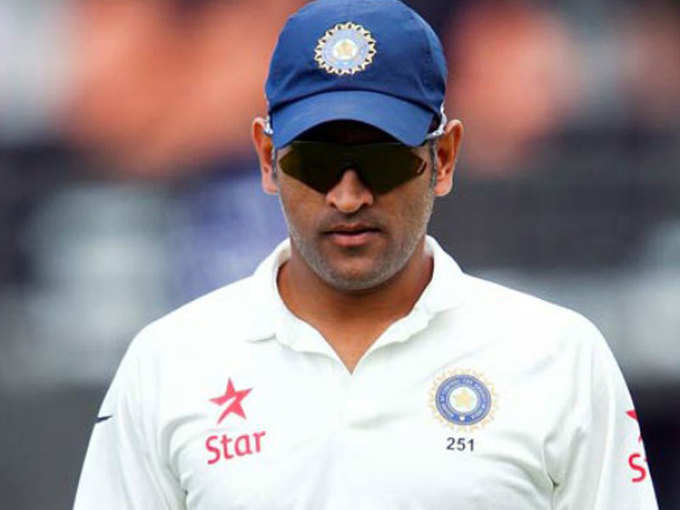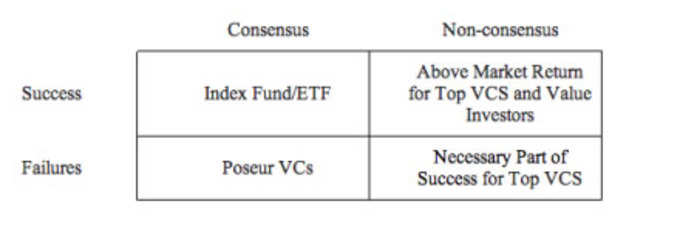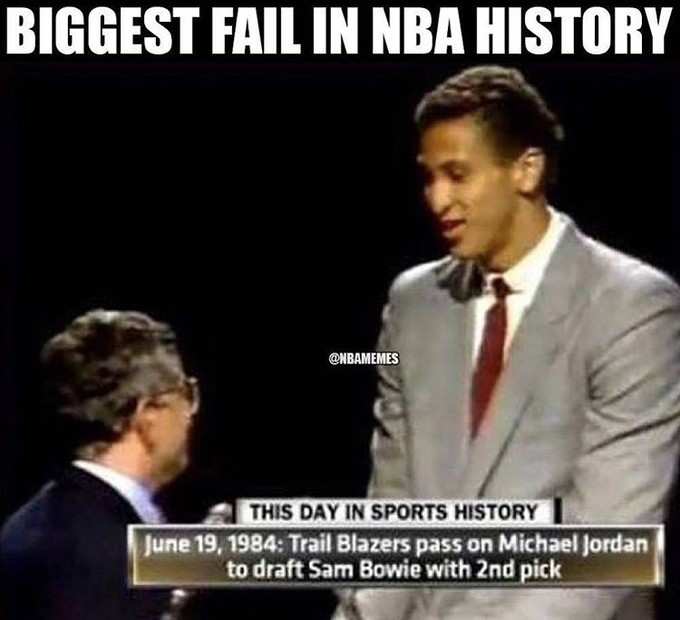 An interesting consequence of the release of M.S. Dhoni : The Untold Story is that many little-known anecdotes from
An interesting consequence of the release of M.S. Dhoni : The Untold Story is that many little-known anecdotes from The one that caught my attention the most was the story around Dhoni’s selection into the
While many in the selection panel, such as Sandeep Patil, were pushing for Dinesh Karthik, Dhoni made it to the side on the back of a firm recommendation by then-captain Sourav Ganguly, and Ravi Shastri.
For all of his astounding success,
Why is this significant ?
Most of us start with the assumption that extraordinary sporting talent is obvious to spot and should lead to a unanimous approval by the selection panel.
Nothing could be further from the truth.
I began to see interesting parallels between sporting selections and the way Venture Capital (VC) investors pick their investments, inspired by a set of quotes from Marc Andreessen.
“We think you can draw a 2×2 matrix for venture capital. …And on one axis you could say, consensus versus non-consensus. And on the other axis you can say, successful or failure.

Image Source
And of course, you make all your money on successful and non-consensus. … it’s very hard to make money on successful and consensus. Because if something is already consensus then money will have already flooded in and the profit opportunity is gone.
And so by definition in venture capital, if you are doing it right, you are continuously investing in things that are non-consensus at the time of investment.
And let me translate ‘non-consensus’: in sort of practical terms, it translates to crazy. You are investing in things that look like they are just nuts…..The entire art of venture capital in our view is the big breakthrough for ideas. The nature of the big idea is that they are not that predictable…
….Most of the big breakthrough technologies/companies seem crazy at first: PCs, the internet, Bitcoin, Airbnb, Uber, 140 characters.. It has to be a radical product. It has to be something where, when people look at it, at first they say, ‘I don’t get it, I don’t understand it. I think it’s too weird, I think it’s too unusual.’”
Of course, making a non-consensus selection, whether in the world of sports or startups, is easier said than done. Consensus by definition, represents a balanced, sensible, rational view that is, in most cases, also correct.
What then does it take to cross the line in order to make a crazy non-consensus selection ?
It turns out that the story of Sachin Tendulkar’s selection into the Indian
Back in 1989, the selection panel was debating whether the 16-year old Tendulkar was ready for international cricket.
“What if he fails?” some in the panel asked.
When it came to decision time, the ball was thrown to senior selector Naren Tamhane, who said, “Gentlemen, Sachin Tendulkar never fails” prompting a narrow 3–2 win in favour of Tendulkar.
Given how Tendulkar’s career played out, Tamhane’s audacious statement appears prophetic, courageous, and even, badass.
Think any longer though and you realize that it was a ludicrous, heavily biased, and quite simply, incorrect statement to make.
But perhaps bias, a strong optimistic bias, is the only way we will ever make a non-consensus bet on an unproven rookie, or a crazy start-up idea.
Bias repeatedly causes us to make many of our worse judgements and decisions.
However, an optimistic bias is also the driving force that makes the entrepreneur believe that his odds of success are infinitely higher than his competition, the selector believe than an unproven teenage cricketer never fails, and a crazy, incomprehensible idea can be the next technological breakthrough.
To borrow from Shailendra Singh, a winning non-consensus investment happens as a result of someone
“…willing to put his neck on the line and is literally pounding the table to assert investment in a startup he believes in..”
That sort of conviction will always necessarily need to be loaded with bias.
But why go through all the song and dance of a heavily-biased non-consensus selection when the stakes are so high ?
Wouldn’t it be safer to just go with a consensus selection ?
Wouldn’t it ?
In the 1984 NBA college draft, the Portland Trail Blazers chose Sam Bowie over a certain Michael Jordan (Who was then picked up by the Chicago Bulls).
And no, it was not even close to being a Non-consensus decision. In fact, according to “Dr. Jack” Ramsay, the head coach of the Portland Trail Blazers at the time,
“It made the most sense for us to select Sam Bowie. It was almost a no-brainer.”

Image Source
Yes, it was a consensus selection to not pick Michael Jordan.
So the next time you are considering ranting about how investors and sports selectors get their picks wrong, remember that someone once called the decision to not pick Michael Jordan a no-brainer, and was paid for it.
